You have surely heard of the famous Bermuda triangle where everything disappears ? Well, in Cuba there is the tabacco triangle where everything disappears into smoke… ” Ne me contar la Historia del tabaco”, which may be translated as “Do not tell me nonsense”. In the region of Vuelta Abajo, in the westernmost corner of the island between the cities of Piñar del Rio, San Juan y Martinez and San Luis, is located a small piece of Cuban “terroir” where the finest cigar tobacco leaves are cultivated… and considered by tobacco enthusiasts to be the best in the world! This spot has all the ingredients – rich red soil, a humid climate and ancestral know-how – to produce the world’s most famous cigars, the “puros”, the habanos ! Therefore, it is a must to visit a tobacco plantation, to meet the “vegueros” who work there, and of course, to buy cigars ! The Finca del Piñar (Alejandro Robaina‘s farm) produces the wrapper or “capos,” the leaves used for the outside of the cigars. Ten hectares of white surfaces amid lush vegetation are quite a sight ! The tobacco used for wrapper is called “Corojo.” The plants are grown under thin white cheesecloth tents called “tapados”, which protect them from insects and wind and also diffuse the sun, thereby preventing the leaves from drying out and allowing them to grow larger and finer. The leaves used for wrapper deserve special attention because you must safeguard their texture and appearance. The other 7 hectares of Finca El Piñar are used to grow filler, the interior mixture, which is produced by assembling three types of leaves (“ligero” young leaves at the top of the plant, “seco”, and “volado” or leaves at the foot of the plant) and the sub-wrapper. The combination of all five of these leaves, plus the secrets of each brand shapes the flavor and aroma of the prestigious “habano”. But before you succumb to the smooth smoke of a Cuban cigar, savor its aroma while watching the waving spiral of smoke that escapes from it. But before you get to this point you have to wait a few years. After the tobacco leaves are harvested and cured, they must be fermented to be fully stabilized for a longer lifespan. The leaves are pileed inside barrels and carefully monitored. For the Best cigars the tobacco fermentation can take up to five years! As Miguel de Cervantes says in Don Quixote “será bien dar tiempo al tiempo” (it would be better to give it some time)… Another myth collapses: the source of this expression is not François Mitterand or even Didier Barbelivien’s song “Il faut laisser le temps au temps” !
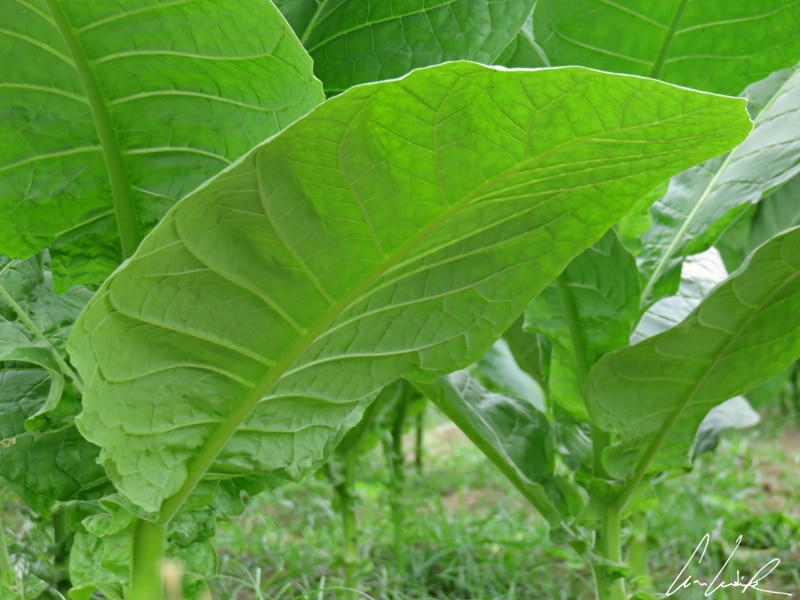
Finca del Piñar, tobacco leaf
After a fifty-day growing season, the tobacco leaves are ready to be harvested… This is the first of the 12 labors of Hercules (or the 12 labors of Asterix for you French!) Each leaf is carefully handpicked to avoid any damage. The workers pick each level of leaves separately at 6-day intervals with a very precise motion: first they remove the leaves next to the stalk, taking care to cut only those of good size, shiny with a velvet lamina, and with intact veins. After harvest, the leaves must be cured. The curing process takes several weeks. The leaves are suspended in small bundles on stalks inside the “casa de tobacco“. In this moisture-laden atmosphere, the leaves are transformed without ever breaking or spoiling. This process allows the leaves to dry out in order to concentrate their aroma and flavor like that of candied fruit. The humidity is carefully controlled. Workers water the ground or light a fire to maintain the proper level. This method may seem archaic, but it works ! Tobacco curing, or color curing because the leaves gradually turn from green to yellow, also reduces the chlorophyll content. With each new picking, the workers hang the leaves in a row above the previous batch until they reach the roof of the “casa de tobacco”, marking the end of the curing process… Attention, ladies and gentlemen, these matured leaves, like all these well-placed men, will end in the same way because “si haut qu’on monte on finit toujours par des cendres ! ” translated as “no matter how high we go, we always end in ashes” to paraphrase Henri de Rochefort. But before ending in smoke, the tobacco leaf undergoes further steps. After the air-cure, the leaves are moved from the curing barn to another area for the drying process. During this 50-day process the leaves take on a golden brown color.

Finca del Piñar, cigars of a given type and format
After being harvested and cured, the tobacco leaves go thought a final process, fermentation. Fermentation allows the tobacco leaves to continue to ripen and to lose excess nitrogen and nicotine. In addition, the transformation of the chemical components that stabilizes the raw leaves will increase aromas and flavors while harmonizing the texture of the tobacco. Finally, it is time to roll the leaves into cigars. In Cuba, 90% of the dried and fermented leaves in the cigar production line are fully controlled by the State. Only after the third fermentation, which lasts a whole year, are the leaves taken to Havana where they undergo their final metamorphosis into Habanos Divins, “ Allez, tournée de rhum pour tout le monde… Non, non un peu de décence les feuilles, on avait dit une fête sans effeuillage!” translated as, “A bit of rum for everyone… No, no hold yourself together, we said a party, not a strip-tease!” In the state-owned factory, the stem cutters gently and expertly remove the central stem of the tobacco leaf. This step is called stripping. Once the leaves have been stripped, they are classified by width, size, texture and color. The workers, mostly women, then roll the cigas on their thighs, which are covered with a white cloth to prevent staining. Perhaps this image of women rollers gave rise the popular myth of cigars rolled on the thighs of virgins? Finally the last step in the process for our little tobacco leaves: in the heart of the “galleria” cigar makers roll the leaves to create cigars of a given type and format. After rolling, the cigars are stored for a period between four and eight weeks before being sold. After all those lost hours of waiting, now comes the moment of truth: the unique pleasure of smoking a “Habano” (for smokers, not me !). But not too much haste, smoking a cigar is almost a religion in Cuba… First you tap it gently to savor its smell, then carefully cut the end before lighting it to enjoy all its flavors and aromas… As the British actor Jeremy Irons once said, “Smoking a cigarette is like having sex; smoking a Havana is like making love…” You are warned !

Las Terrazas, Lago El Palmar
Want a total change of scenery ? From cultivated land to undeveloped nature ? Just a few miles further, still in the province of Piñar del Rio, your wish will be fulfilled… Green hills, luxuriant vegetation, lakes (Lago El Palmar and Lago del San Juan) and natural pools (Baños de San Juan) welcome you to Las Terrazas, designated as a biosphere reserve by Unesco in 1985. The San Juan River flows gently down the side of a hill, forming a series of small waterfalls and natural ponds with fresh and clear water. The Baños de San Juan are one of the main attractions of Las Terrazas. In the winter, only the most courageous bathe in the icy water, but in summer, fresh water, the tall trees, emerald green plants and crystalline waterfalls make for idyllic swimming !
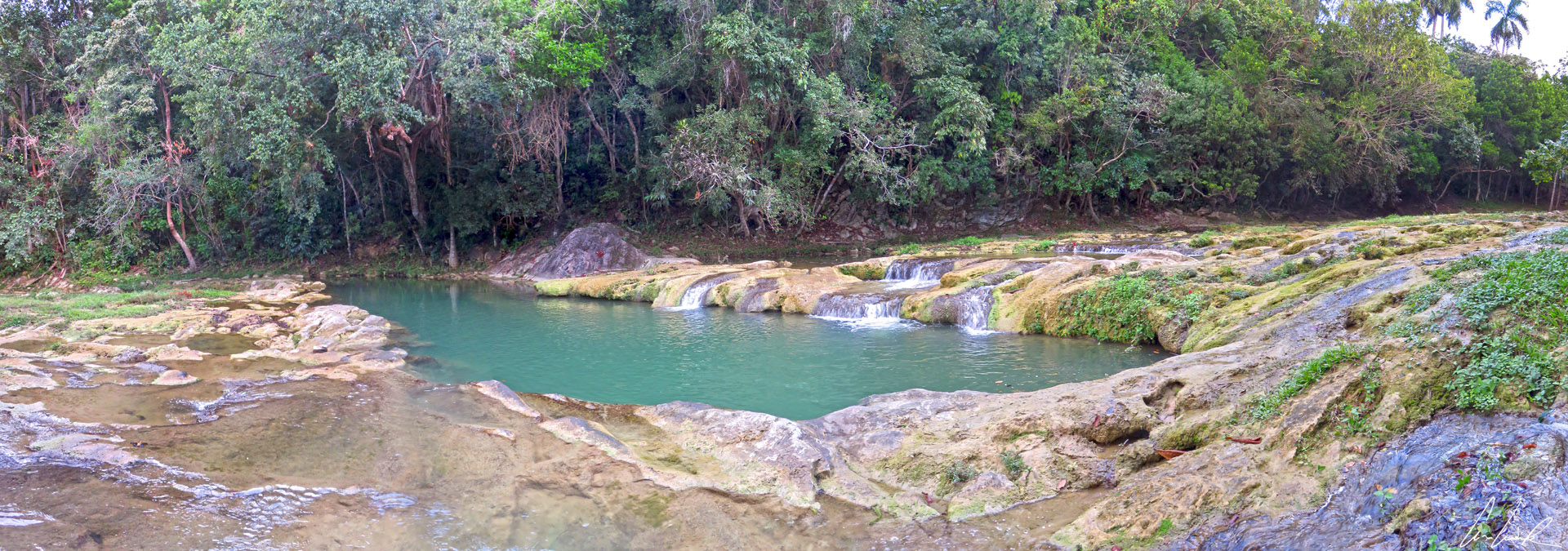
Las Terrazas, Baños de San Juan
Las Terrazas, a true haven of peace, is only an hour drive from Havana, but it seems hundreds of miles from the city ! This small garden with lush vegetation has not, however, always been a peaceful place. During the Spanish colonization and the following development of coffee plantations by the French during the 19th century, the region suffered from massive deforestation. Today, you can still find the old coffee house, which dominates the cafetal (at a vertiginous height of 740 feet) and the ancient ruins of the Buenavista coffee house. In 1949 the site was abandoned in part because of strong competition from Brazilian coffee. Then in 1968, a special project announced the Renaissance (not a science fiction film) of Las Terrazas: seven million trees representing 24 different species were planted, not only in the fields but also on steep slopes which were worked into terraces to avoid erosion, a rural technique, giving the area its name Las Terrazas. The project is a success. Today, in the middle of the Sierra del Rosario, the biosphere covers more than 5,000 hectares and includes rare species such as the Caribbean tree and the Mahagua, a hardwood used to make baseball bats. In this biosphere you can find the Almacigo, a strange tree with the red bark more commonly called Arbol del Tourista or “The tree of the tourist”. You are surely wondering… what is the relationship between a tree with a red bark and a tourist ? Ah, ah, you quit… If you look carefully at the red bark of the two widely separated main branches of the tree, you have the typical image of the tourist’s legs burning in the sun on the beaches of Cuba ! If you are a lucky and a very attentive visitor, you may see the Zunzuncito, the smallest hummingbird in the world, and the red, white and blue plumage of the Tocororo, the national bird of Cuba. But in the late afternoon, when the light fades, there are no hummingbirds on the horizon… we are not disappointed instead we witness the strange ballet of vultures above the ruins of the coffee plantation… a strange atmosphere… “Atmosphère! Atmosphère ! Est-ce que j’ai une gueule d’atmosphère?” (“Atmosphere! Atmosphere! Do I look like I need a change of atmosphere ?”, Arletty’s famous line in the 1938 French movie, L’Hôtel du Nord by Marcel Carné.

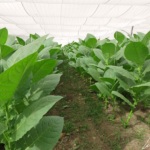



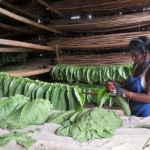
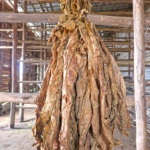
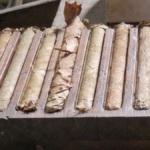
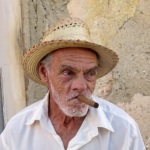



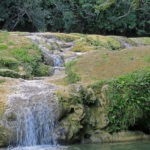
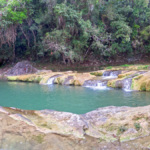
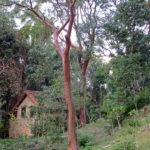


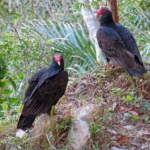


Wow, this is truly a labor of love. It’s amazing how careful they must be to pick each leaf. I bet the cigars from around here are truly the best! I loved your explanation of everything they do to make them, I felt like I was touring the area with you! I hope to make it to Cuba some day.
I hope you will visit Cuba soon and have the pleasure of smoking a « Habano » or at least to see the « Old-Fashioned Way » to make Cuban cigars… a long and natural process !
Wow, looks like an awesome experience. I need to get back to Cuba soon !
Indeed, it was an amazing experience 🙂 I hope you will visit Cuba soon and have the pleasure of smoking a « Habano » !
The tree of the tourist 😀 haha I would never guess what is the relationship!
So you didn’t try smoking a cigar there? I am a non-smoker but this description of harvesting tobacco makes me wanna try 😀
The gumbo-limbo is comically referred to as the tourist tree because the tree’s bark is red and peeling, like the skin of sunburnt tourists ha, ha 🙂 So funny ! I’m not a smoker, so I did not try any cigar but I really enjoyed to learn that the process for making Cuban cigars today remains much the same as it was more than four centuries ago !
Really interesting, never knew so much work was involved. Lovely pics too. What camera do you use?
Thank you 🙂 . I have a very basic camera Canon PowerShot SX700 HS.
I had no idea it took such a long time to produce a cigar! Cuba is so high up on my bucket list, I wish it wasn’t so far away from Hong Kong!
I hope you will visit Cuba one day and taste the unique pleasure of smoking a “Habano” 🙂
I honestly was confused when you mentioned the Bermuda triangle. It took me a while to realize what you were getting at but once I did I loved the comparison. I love learning how the entire business works. It looks so simple but then it is hard work. It is those tiny details that those work wary hands put in that give the cigars their unique flavor.
The Cuban Cigars are really made “Old-Fashioned Way”. However, this process, long and natural, is supervised in a constant way !
This is an interesting, informative read on how cigars are made in Cuba. 🙂 Such thoughtful process to make the best cigars!
If Las Terrazas is a reserve, can tourists visit it? I’d love to see the natural pools!
The process for making Cuban cigars today remains much the same as it was more than four centuries ago – Cuban Cigars are made “Old-Fashioned Way” 🙂
Las Terrazas is a good example of Eco-Tourism in Cuba which stands out for its beauty and variety of its wildlife. Las Terrazas is the weekend retreat for overheated habaneros, especially in the summer. So, it’s better to get there during the week if you want to have a quiet swim in the natural pools !
I live in Miami surrounded by Cubans but never knew any of this. I love all the fun expressions. Question did you try the cigars? Beautufully written piece! Can’t believe how laborious the process is.
I’m not a smoker, so I did not try any cigar 🙂 It is such a long process to get to the prestigious “habano”. I was particularly impressed to learn that an experienced cigar-roller can produce hundreds of very good, nearly identical, cigars per day !
Wow, this is so fascinating! Thank you for this post, I would have never known about the process! So informative. I’ve been dying to get to Cuba.
Thank you 🙂 It was an incredible experience even if I’m not a smoker !
Wow this is really interesting! I love learning about things like this that make locations special and unique. Thank you for sharing this and I enjoyed your beautiful pictures as well!
I love to get a feel for the local culture by listening to their music, eating local, reading their history… When feasible I meet local people who tell real and passionate stories and anecdotes !
Lots of information in this post! Las Terrazas look wonderful! It’s great to hear this Renaissance project was successful at planting so many trees and creating such a great ecosystem. And the natural ponds sound like a great way to take a break from the heat!
Las Terrazas is a very good example of Eco-Tourism in Cuba which stands out for its beauty and variety of its wildlife. Regarding the Baños del San Juan, it’s hard to envisage more idyllic natural swimming pools 🙂
As a non-smoker, I thought this would be wasted on me but it was actually very interesting!
I am a non-smoker as well 🙂 but it was very interesting to learn about this « Old-Fashioned Way » to make Cuban cigars !
Wow, so fascinating. It’s so interesting that there is such a fine art to tobacco – it makes the idea of smoking seem so much more romantic, lol.
Exploring Cuba’s cigar culture with the visit of the Alejandro Robaina Tobacco Plantation, arguably the most famous tobacco farm in the world, was really a great experience 🙂
A whole Tobaco Triangle! No wonder Cuba is know world wide for the Cuban cigars. This is one place which is there in my bucket list for a long time but Alas! The flights are soo expensive from India so I guess Tobaco triangle gotta wait for another year. Thanks for the amamzing info, keep sharing your awesome experiences.
Thank you 🙂 I also liked my short trip in India, discovering the “Golden Triangle” a circuit of several miles South of Delhi connecting the capital Delhi, Agra, and Jaipur. See more on my other articles from my trip in India